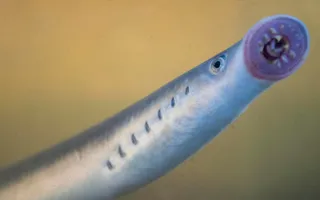Stone loach and our canals
This small fish prefers flowing water that is clean and well-oxygenated. They can be found in streams, rivers and some canals, feeding at the bottom.
Nocturnal and solitary, they feed on small invertebrates at night using their barbels to find prey. During the day, stone loach lay still on the riverbed, partially buried under submerged rocks to avoid detection from larger predators.
How to identify a stone loach
The loach has a smooth appearance with very tiny scales. Sandy brown in colour, loach have camouflage-like dirty brown spots along the body and a greyish belly,
They’re small with long, slender bodies – usually reaching around 8cm. They always have more than two pairs of barbels around an underslung mouth (four in the front and two at the corners). The pelvic fins are opposite the dorsal fin and midway down the body.
Lifecycle of a stone loach
Stone loaches spawn from April to May. Both sexes have spawning tubercles, and the female can lay up to 10,000 eggs in a season. These eggs are attached to plants and stones. Young fish mature at two or three years old.
Where to find stone loach
Loaches live amid the gravel at the bottom of rivers and streams. They’re mainly nocturnal, spending the day under cover of rocks and stones. You can find them in the River Avon, River Severn and the Llangollen Canal.
How to catch a stone loach
Stone loaches, an often-overlooked fish, are best caught between late evening and nightfall. They prefer very clean rivers with stony beds. Use small live baits of squatts, red or blood worms, along with light equipment.






